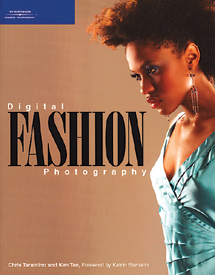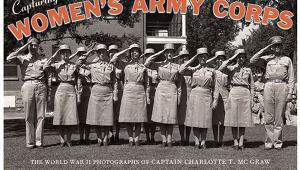Holiday Books; For The Digital Photographer
"Do give books for Christmas. They're never fattening, seldom sinful,
and permanently personal."
--Lenore Hershey
It's a sign of the times. In 2005 there were more digital imaging books published than ever before and trying to pick some of the best was difficult, but I'll stick my neck out and introduce you to some of the best of the best for this year.
And The Winners Are...
Creative Photoshop Lighting Techniques; by Barry Huggins;
Lark Books; 192 pages; $29.99; softbound plus CD (ISBN 1-57990-538-2)
This year's best digital imaging book is Barry Huggins' Creative
Photoshop Lighting Techniques. It has cogent text, beautiful photography, and
extraordinary production values that combine to create a book where readers
will find useful information on every page. Want to create fog? He'll
show you how on page 76 with complete step by step instructions and clear illustrations.
Rainbows, heat haze, lighting? It's all here in two-page spreads that
show you how to do it from start to finish. There's more than weather
effects with entire chapters on creating reflections, working with the "Quality
of Light," and creating special lighting effects. Don't put this
book on a bookshelf! Keep it near your computer to use as a reference and periodically
flip through the pages looking for inspiration. I guarantee you'll find
it.
 |
Up To Speed (Photoshop CS2); by Ben Willmore; Peachpit Press;
172 pages; $24.99; softbound (ISBN 0-321-33050-1)
Winner of best concept is Ben Willmore for Up To Speed. Imagine a book that
tells Photoshop CS2 users what's new and different from the previous version.
No more sifting through 500 pages explaining stuff you already know to get to
what's new in CS2; that's all you'll find. In other words,
this is a "good parts" version of the Manhattan phone book-sized
Photoshop books that proliferate, evidently because authors are paid by the
pound. This slender volume has three sections: Foundation, Design, and Photography.
Don't care about Design, read Foundations (that's where all the
inside scoop on Bridge is found) and skip to the Photography section for one
of the briefest yet best discussions on working with Adobe Camera Raw you'll
find anywhere. Great design and reproduction make Up To Speed my best buy for
'05.
 |
Digital Fashion Photography; by Chris Tarantino and Ken Tan;
Thomson Course Technology; 256 pages; $34.95; softbound (ISBN 1-59200-525-X)
From the publishers of When Pancakes Go Bad (what sounds like a B-grade horror
movie is a really cool Photoshop book) comes this lushly produced book on fashion
photography that's more a coffee-table book than a how-to guide, and that's
a good thing. Oh sure, it's full of step by step tips on creating fashion
photographs, including planning, lighting, and postproduction, but it's
the images themselves that will inspire you to use these techniques to create
your own fashion photographs. While the illustrations may all be from the fashion
genre there's no cookie-cutter approach. All of the images have their
own unique style, which also makes the book a valuable resource. An unbeatable
combination of minimalist text with big spectacular fashion imagery make Digital
Fashion Photography a must-have book.
 |
Adobe Photoshop CS2 for Photographers; by Martin
Evening; Focal Press; 676 pages; $44.95; softbound with CD (ISBN 0-240-51984-1)
If you prefer the unexpurgated, Martin Evening's hefty volume is an epic
reference work for readers who need to know every detail of using Photoshop
CS2. Proving that indeed good things come in large packages, Evening's
somewhat text heavy book is nevertheless blessed with great text and images.
He dissects the program and examines each and every one of its functions in
microscopic detail, usually illustrated with wonderful (but small) photographs.
Along the way there are diversions. Plopped down in the middle is a chapter
on digital capture and while Evening includes the inevitable discussion on scanner
types, he quickly moves on to show you how to get the most out of your images
that may have originally been captured on film. A similar section follows, showing
how to squeeze the most out of every pixel, including a look at digital workflow.
 |
The Art of Photoshop; by Daniel Giordan; SAMS; 304 pages;
$49.99; softbound (ISBN 0-6723-2270-6)
This is the kind of book that exemplifies how photographers want to see their
work presented. SAMS is to be congratulated for the lush production values in
this oversized, almost coffee-table-sized book. I also love the fact that SAMS
is in Indianapolis out here in America's Heartland. The book's design
combines elegance with enough function to make Ludwig Mies van der Rohe smile.
Most of the topics demonstrated, such as the wonderfully titled "It's
about focus not sharpness," fit on two pages so you can easily soak up
content and context. While juggling the art aspects of the book with the practical,
Daniel Giordan errs on the side of artfulness, filling the pages with richly
reproduced images that made me want to run out and take pictures.
 |
The Digital Color Printing Handbook; by Tim Daly; Amphoto/Watson-Guptill
Publications; 156 pages; $24.95; softbound (ISBN 0-8174-7155-3)
This book is not about how to make prints from your image files; it is about
creating photographs that can be printed. There is more information on scanning
and color management than printing; these subjects, like everything else in
the book, are covered in wonderful detail that will help those new to digital
imaging prepare images for fine art printing, which is really the book's
focus. In Color Recipes, Tim Daly shows you the basics of converting color to
monochrome but takes it further by including tutorials on split-toning, low-key
color, and autochrome. The Special Techniques in Chapter 9 include softening
(a.k.a. creating a Holga look), the use of color toners, and a simple way to
create the effect of a polarizing filter--no plug-ins required. Despite
its somewhat misleading title, Daly's book belongs on your nightstand
to provide inspiration before retiring for the evening.
 |
- Log in or register to post comments

















































